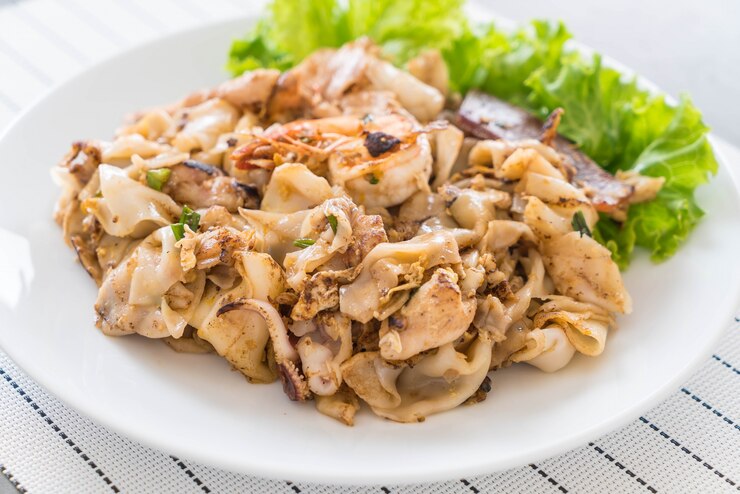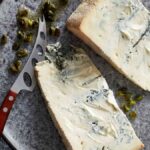Kua Gai noodles, also known as “rice noodles” or “Gai noodles,” are a beloved dish originating from the southern regions of China. Known for their unique texture and flavorful ingredients, these noodles have gained popularity not only in China but also in various parts of the world. In this article, we will explore the origins, preparation, and variations of Kua Gai noodles, providing you with all the information you need to appreciate and recreate this delicious dish at home.
The Origins of Kua Gai Noodles
Kua Gai noodles have deep roots in the culinary traditions of southern China, particularly in Guangdong province. This region is renowned for its rich food culture, characterized by fresh ingredients and a balance of flavors. The term “Kua Gai” translates to “cut chicken,” which reflects the dish’s typical inclusion of sliced chicken.
Historically, Kua Gai noodles were a staple for the local population, often enjoyed during festivals and family gatherings. Over time, this dish has evolved, incorporating various ingredients and cooking styles, making it a versatile option for any occasion.
Ingredients That Make Kua Gai Noodles Special
The key to a delicious bowl of Kua Gai noodles lies in its fresh and high-quality ingredients. Here’s what you’ll typically find in this dish:
Rice Noodles
The star of the dish, rice noodles, is made from rice flour and water. These noodles are gluten-free, making them a popular choice for those with gluten sensitivities. They come in various thicknesses, with the wide flat noodles being the most common in Kua Gai.
Chicken
As the name suggests, chicken is a primary ingredient. Typically, boneless chicken thighs or breasts are used for their tenderness and flavor. The chicken is often marinated to enhance its taste before cooking.
Vegetables
Fresh vegetables add color, crunch, and nutrition to Kua Gai noodles. Common choices include:
- Bok Choy: A staple in many Asian dishes, bok choy adds a mild flavor and crisp texture.
- Carrots: Sliced thinly or julienned, carrots provide sweetness and color.
- Bean Sprouts: These add crunch and a refreshing taste.
Aromatics and Seasonings
Aromatics such as garlic and ginger are essential in creating a fragrant base for the dish. Soy sauce, oyster sauce, and sesame oil are commonly used to enhance the flavor profile, while chili paste can be added for those who enjoy a bit of heat.
How to Prepare Kua Gai Noodles
Making Kua Gai noodles at home is a rewarding experience. Follow these steps to create a delicious version of this traditional dish.
Step 1: Gather Your Ingredients
Before you start cooking, make sure you have all the necessary ingredients ready. Here’s a simple list to follow:
- Rice noodles
- Boneless chicken thighs or breasts
- Fresh vegetables (bok choy, carrots, bean sprouts)
- Garlic and ginger
- Soy sauce, oyster sauce, sesame oil
- Optional: chili paste for heat
Step 2: Prepare the Rice Noodles
Begin by soaking the rice noodles in warm water for about 20-30 minutes, or until they are soft but not overly mushy. Drain and set aside.
Step 3: Marinate the Chicken
While the noodles are soaking, slice the chicken into thin strips and marinate it with soy sauce, minced garlic, and a touch of sesame oil. Allow it to sit for at least 15 minutes to absorb the flavors.
Step 4: Stir-Fry the Ingredients
In a large wok or skillet, heat some oil over medium-high heat. Add minced garlic and ginger, stirring until fragrant. Then, add the marinated chicken and cook until it’s browned and cooked through.
Step 5: Add Vegetables
Once the chicken is cooked, add the sliced carrots and bok choy to the wok. Stir-fry for a few minutes until the vegetables are tender yet still crisp. Finally, add the soaked rice noodles and toss everything together.
Step 6: Season and Serve
Drizzle oyster sauce and a bit of soy sauce over the mixture, stirring well to coat the noodles and vegetables. If desired, add chili paste for some heat. Serve hot, garnished with bean sprouts and sesame seeds.
Variations of Kua Gai Noodles
One of the best aspects of Kua Gai noodles is their versatility. Here are a few variations to try:
Vegetarian Kua Gai Noodles
For a meatless option, substitute the chicken with tofu or tempeh. Incorporate a variety of vegetables like bell peppers, mushrooms, and zucchini to enhance the dish’s flavor and texture.
Spicy Kua Gai Noodles
If you love heat, don’t shy away from adding more chili paste or fresh sliced chilies during cooking. You can also top the dish with crushed peanuts for an extra layer of flavor and crunch.
Seafood Kua Gai Noodle’s
For a seafood twist, consider adding shrimp or squid to the dish. The seafood can be cooked alongside the chicken or separately, depending on your preference.
Nutritional Benefits of Kua Gai Noodles
Kua Gai noodle’s not only satisfy your taste buds but also provide several nutritional benefits. Here are a few:
High in Carbohydrates
Rice noodles are an excellent source of carbohydrates, providing energy for your day. This makes them a great option for athletes or anyone needing a quick energy boost.
Protein-Rich
The inclusion of chicken (or tofu for vegetarians) offers a good source of protein, essential for muscle repair and growth.
Packed with Vegetables
The variety of vegetables in Kua Gai noodle’s adds vitamins, minerals, and fiber to the dish. This combination contributes to overall health and aids in digestion.
Conclusion
Kua Gai noodle’s are a delightful dish that showcases the rich culinary traditions of southern China. With their versatile ingredients and delicious flavors, they can easily be adapted to suit any palate. Whether you choose to stick to the traditional recipe or experiment with different variations, Kua Gai noodle’s are sure to impress. So why not try making this dish at home? Your taste buds will thank you!
FAQs
What are Kua Gai noodles made from?
Kua Gai noodles are primarily made from rice flour and water, forming soft, gluten-free rice noodles that are the main component of the dish.
Can I make Kua Gai noodles vegetarian?
Absolutely! You can easily make a vegetarian version by substituting chicken with tofu or tempeh and adding a variety of fresh vegetables.
How do I store leftover Kua Gai noodle’s?
To store leftovers, keep them in an airtight container in the refrigerator. They can be reheated in the microwave or on the stovetop with a splash of water to prevent drying out.
Can I use different types of noodles for this dish?
While rice noodles are traditional, you can experiment with other types of noodles like egg noodles or udon. Keep in mind that cooking times may vary.
What can I serve with Kua Gai noodle’s?
Kua Gai noodle’s can be served as a standalone dish or paired with a side of dumplings, spring rolls, or a fresh salad for a complete meal.







